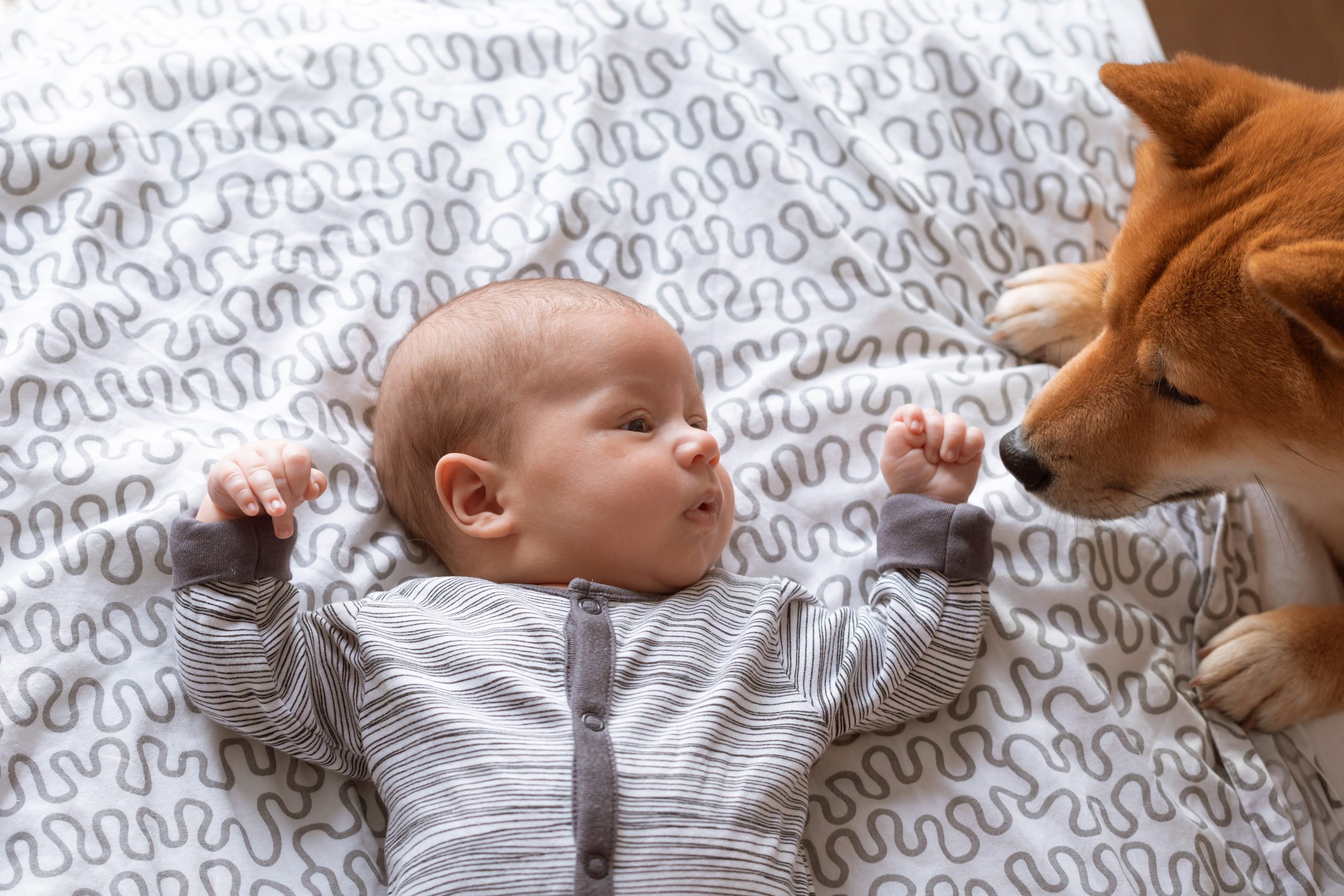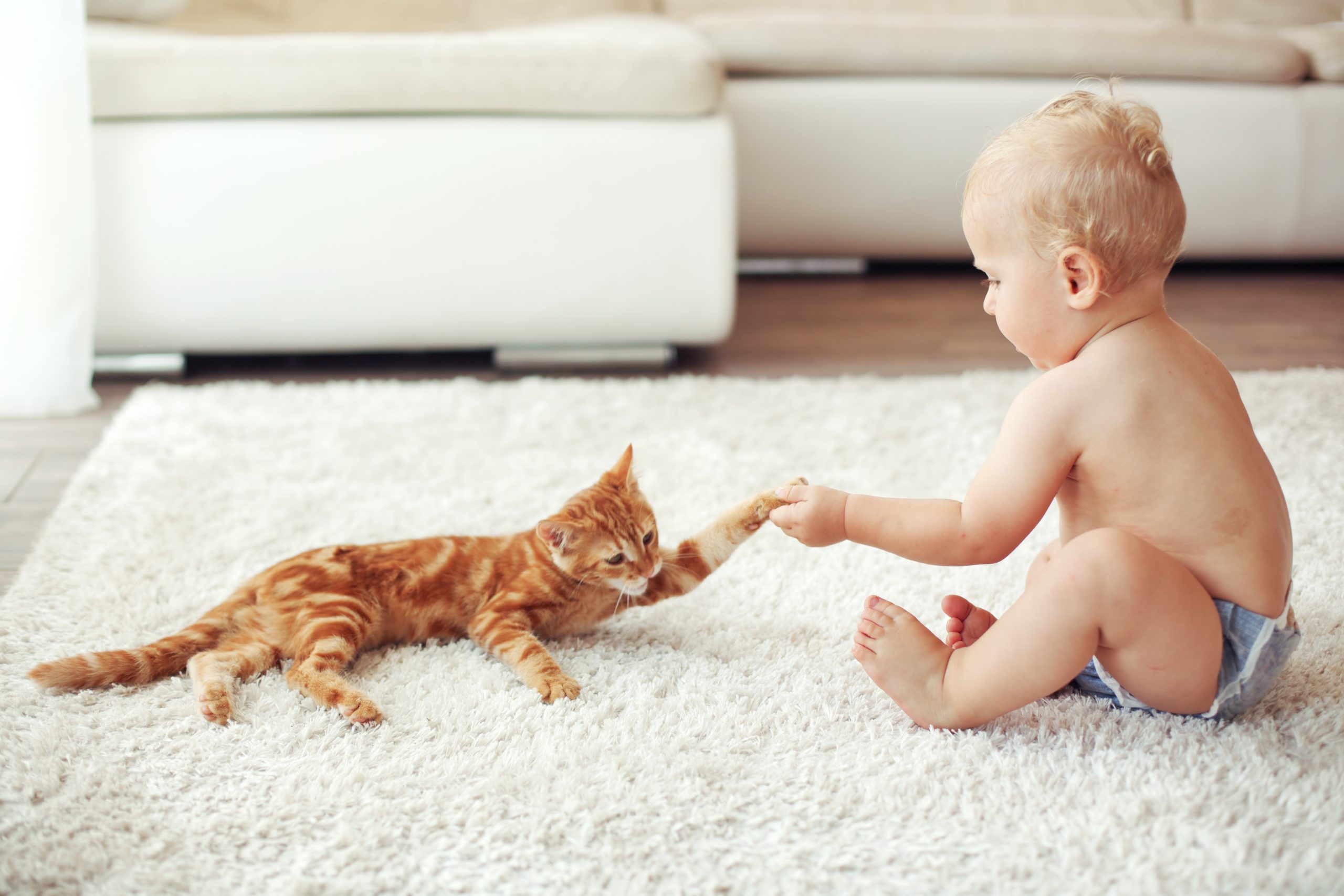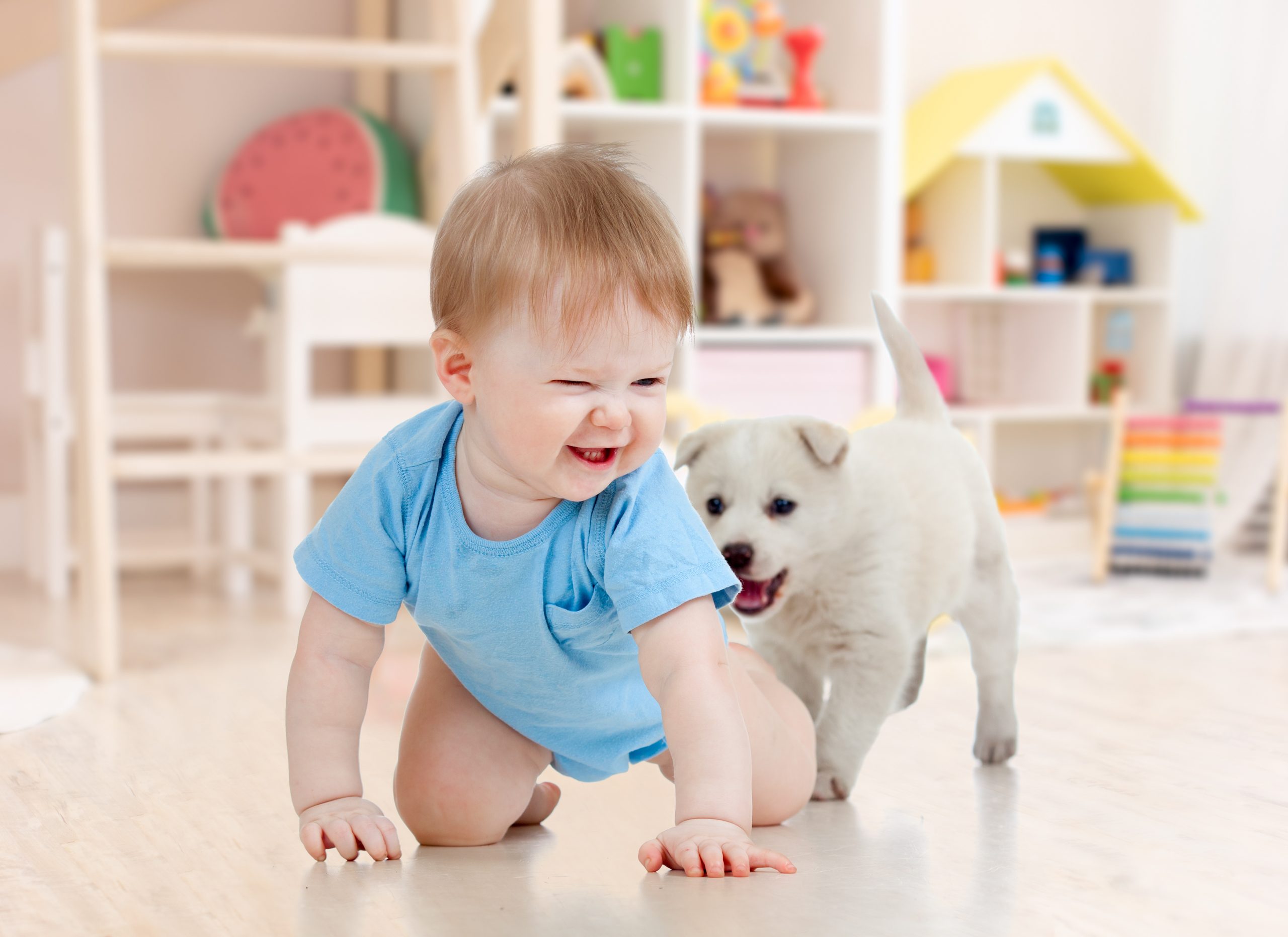How to Introduce Your Baby to a Pet

The birth of a newborn baby is a beautiful and exciting time for a couple. Now that you’ve given birth, prepared the nursery, and come up with a name, it’s time to bring your baby home. Yet, one aspect of bringing a baby home that is not often talked about is doing a pet introduction.
A baby is brand new territory for your family pet if they have not been around one in a previous home. With an infant’s smells, sounds, and moves, your dog or cat will have many new things to deal with around the house.
If you have not introduced your pet to your baby correctly, this can cause your pet to not bond well with the baby and potentially attack. According to the Australian Institute of Health and Welfare, “[pet] attacks result in more than 2,000 hospital admissions per year in Australia.”
Here are some of the things you should do when introducing your family pet to your baby.
Don’t Let the Introduction Start at Birth
Before suddenly exposing your pets to your baby right after birth, you need to start preparing a few months in advance.
One good way to begin this training is teaching your dog the “Go away!” command several weeks to months before the baby comes: tossing treats away from them while saying, “Go away.” You should also teach your pet the notion that the nursery is a room that is now considered “off-limits” to them, thereby setting a clear boundary they should not cross.
Another great tip is that you should carry a doll resembling a baby around the home, coo at it, and place it into a baby carrier. This teaches your dog to have better familiarity with the items your baby may interact with.
You can enhance the effect by playing the sounds of a baby crying. Play the sound in different rooms and at different points in their day-to-day life.
If your dog does not know basic training, be sure to take them to obedience classes run by the RSPCA. You can find the nearest classes available to attend here. This is essential given that an instructor can help you correct behaviours that seem innocuous now—like jumping up to greet you at the door—but can later become an issue.
On the Day Your Pet and Baby Meet
One of the first things you should do is bring an object with your baby’s scent, like the burp cloth from the hospital after the baby is born. This can have an even better effect if you also bring a treat into the situation.
Take your dog on a walk to tire them out and make sure it is calm before moving into the same room as the baby.
Greet your pet while you are not near your baby, preferably in the doorway or on the sidewalk outside. While they meet, the pet should be on a leash and/or collar, and the baby should be strapped into the carrier or held in your arms. You and the person holding the baby must also be in a calm, positive state.
Praise your pet for good behaviour while petting them and let them have the leeway in choosing to come up to the infant or not.

Let Your Family Pet and Newborn Bond
Just like you as a parent need to bond with your child during their development, your family pet can also benefit from forming a secure attachment to a baby. This can be great for babies since young children are biologically programmed to form attachments with other creatures, thereby helping them to survive and ultimately to develop and thrive.
While this happens, you should closely supervise your pet’s interaction with the baby at all times. Pets like dogs and cats are known to like to cuddle with young children. This can lead to inadvertently cozying up to an infant’s face while they are sleeping.
While it is very cute, it could both frighten the baby and make them prone to suffocation.
Let the pet get used to the baby before letting them come up to the baby while off-leash, and hold the baby higher than your pet so they cannot get close enough for an accident to happen.
Your pet should also not lick the baby’s face since this could introduce the undeveloped immune system to other bacteria that are present in your family pet’s mouth. Instead, let them lick your baby’s feet. Eventually, you can start letting your pet lick other parts of the child’s body when your baby is older.
Spend Time With Your Pet Alone
Just like you need time in the day to spend all your attention on your baby, so do you need to make time for your fur baby. Your pet is like a child in the family, so it makes sense that you should give your family pet the attention they deserve even though there is a new member of the family. It also prevents jealousy by your pet just because they are not receiving the same amount of attention as they used to.
Mark a period of time in the day when you move the baby to another room or let your spouse spend time with them. Set a timer for five minutes to do one of your pet’s favourite activities, even if that is just snuggling with it on the sofa. This lightens the load from the stressful and sleep-deprived time you might be having adjusting to the needs of an infant.
A family pet does not need any new toys to make them happy about a change in the home; they only need your love, support, and routines they have gotten used to over the years. While spending time with your pet, play with them, take them on walks, and cuddle.

Keep and Maintain Boundaries
While you want your baby and pet to get along well, you also need to take other precautions to make sure your baby is safe from harm, and your family pet can feel a sense of security that is not affected by a new family member.
If your dog is slightly larger, a wire-ventilated crate filled with their favourite toys can be a good place to give your pet a safe space while also having interaction with the family. Another way to do this is by setting up baby gates around the house. With this, this gives the baby and your pet separate space to play with their toys without interruption.
Once your child is older, you can teach them to be very gentle toward your pet and pet nicely. This will enforce good behaviour and teach your pet that a child is not a threat.
Signs That Your Pet Is Not Tolerating the Baby Well
With how loyal a pet can be to their owners, it can be disarming for them to suddenly have the attention usually meant for them to shift to a baby. Because of this, your pet may start to show behaviours showing resentment toward your baby. Signs you should keep an eye out for a pet becoming resentful includes:
- Urinating or defecating inside the home
- Failing to use the litterbox
- Barking, hissing, or snapping
- Depression
- Grooming excessively
- Eating more or less than usual
- Unusual eye contact
As soon as you see these signs, take the action needed to correct these behaviours, and enforce positive associations with you and the baby.
If even with all of the steps taken, your pet does not come to bond positively with the baby, it may be time to consider whether to move your pet to a better home where children are not present. However, before doing that, check with your veterinarian.

A Pet Introduction Doesn’t Have to Be Complicated
Bringing your baby home for the first time is an exciting occasion for your new family. Throughout this special moment, it is important that you have taken the precautions to make sure your family pet is prepared and ready for a new addition to the family. With the right care, your family pet and newborn infant will be best friends for years to come.
We believe parents deserve all the support they can get when they bring a baby home. Contact us today and learn more about our story and why our parenting, health, and nutritional articles are trusted by parents all over Australia.



